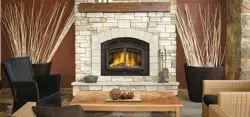Loading ...
Loading ...
Loading ...

W415-2044 / C / 08.20.21
EN
34
operation
8.0 operation
TIPS FOR BURNING:
• Create a large fi re to heat up the appliance before closing bypass door and adjusting to a slower burn.
• To create a large, quick burning fi re, use small pieces of wood.
• For a lower, but extended burn, stack larger pieces of wood close together.
• For long burns, leave a 1” (25mm) - 2” (51mm) bed of ashes.
• Burn dry wood only.
• With the exception of overnight burns, create large, quick burning fi res whenever possible. Smaller, slow
burning fi res using large logs will cause the glass to become dirty. Larger, quick burning fi res using medium
sized wood to refuel frequently are much more effi cient.
• It is important to minimize visible smoke emitting from the chimney. Burning seasoned fi rewood, maintaining
the appliance catalyst and following the operating instructions contained within this manual will ensure that
visible smoke emissions are minimized.
Expansion / contraction noises during heating up and cooling down cycles are normal and to be expected.
DO’S
• Verify with a moisture meter that wood contains no
more than 20% moisture content.
• Burn several pieces of medium sized wood as they
are better than a few big pieces.
• Clean chimney regularly.
• Refuel frequently using medium sized wood.
• “Fine tune” the air settings (if applicable) for optimum
performance.
DONT’S
• Take ash out immediately. Let it accumulate to a
depth of at least one inch. A good ash layer provides
for a longer lasting and better burning fi re.
• Burn wet wood with more than 20% moisture
content.
• Close the door too soon or damper down too
quickly.
• Burn one large log rather than two or three smaller
sized logs.
• Burn at continually “low setting” (if applicable), if
glass door is constantly blackened. This means the
fi rebox temperature is too low.
• The wood heater has a preset minimum low burn rate that must not be altered. It is against United States
Federal regulations to alter this setting or otherwise operate this wood heater in a manner inconsistent with
instructions in this manual.
!
WARNING
8.1 appliance operation
Primary combustion air enters through the air control inlet box to control draft, travels up the side through a duct
and enters the top centre of the combustion chamber into a preheating airwash located across the top and then
down the window to feed the fi re and also to ensure that the glass remains clean.
Secondary air feeds directly into the combustion chamber at hearth level then travels to the secondary air
chamber which injects the air to oxidize the unburnt gases rising to fl ue. During start up and refueling, the bypass
door must be opened to circumvent the catalyst until operating temperatures are achieved.
Before loading the appliance, ensure all required insulation and baffl es (if equipped) are installed and situated
properly. For maximum effi ciency, when the appliance is thoroughly hot, load it fully to the specifi ed maximum
amount and burn at a medium low setting (if equipped). The whiteness of the bricks and the cleanliness of the
glass are good indicators of your operating effi ciency. Not enough heat is produced when only a few pieces of
wood are burned or the wood may not burn completely.
note:
Appliances surrounded by solid rock or brick will experience a longer heat up period as those materials
absorb the heat being generated.
The following operating procedure is recommended to achieve optimal performance:
When operating on high burn rate:
1. We recommend setting the blower to the “HIGH” setting and operating with a thermodisc (located at the back
of the appliance).
When operating on medium burn rate:
2. We do not recommend using the blower.
When operating on low burn rate:
3. We recommend turning on the blower after approximately 60 minutes at the minimum setting and operating
with a thermodisc (located at the back of the appliance).
Loading ...
Loading ...
Loading ...
